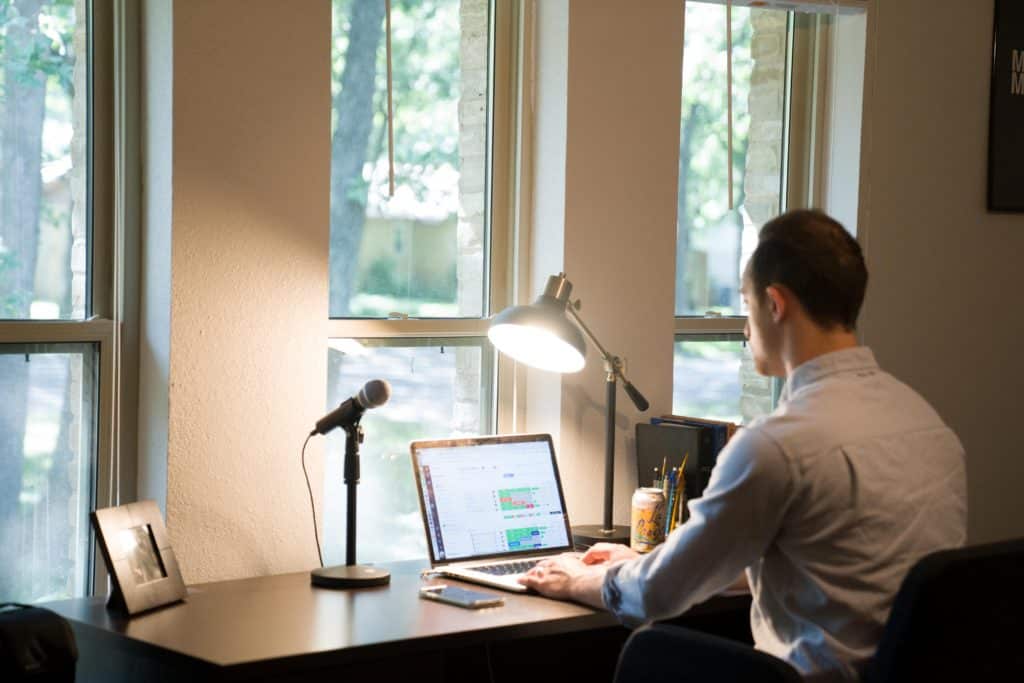55% of people watch video content every day, and 78% of people watch videos online every week. As audiences and consumers spend more time glued to their screens, businesses and organizations are investing more than ever in their video content.
Video content creators at brands and businesses are looking to improve the outcomes and engagement of their videos. With this reality in mind, more are considering video accessibility measures to reach larger audiences. They’re adding closed captioning to video and turning more to AI transcription tools to meet diverse viewer needs. These features were previously thought of mainly to assist individuals with disabilities, but now they’re being considered greatly for many “nontraditional” use cases.
While closed caption services have been provided regularly for years for content being broadcasted, as well as educational and public-facing content, the new landscape for video accessibility includes a greater variety of use cases.
Enhancing Marketing Video
Marketers are publishing more videos to drive brand awareness and excitement around new services and products. When investing in video content, which is often the most costly, businesses want the biggest bang for their buck. They want to make sure they’re reaching as many individuals who fit into their target audience as possible.
To reach diverse audiences more effectively and improve video engagement, marketers have been employing services like closed captioning software. Closed captions ensure individuals with hearing loss or others watching silently can engage with videos effectively. Verbit offers closed captioning to not only check the captioning box, but provide accurate captions to ensure brand messages are conveyed correctly. It’s incredible to see how brands and marketers are investing in providing greater accessibility for audiences, while also benefiting by increasing their audience reach for marketing videos.
Marketing research indicates that video content is highly effective in driving purchases, with 84% of people indicating that watching a brand’s video has helped convince them to buy a product or service. Therefore, ensuring both the video content itself is engaging and the way it is distributed and offered to audiences meets diverse viewer needs can be especially important for marketers charged with video engagement and goals based on ROI.
Solving Silence on Social Media
As business leaders creating video have more social channels to distribute it on, different audience needs and content need to be considered for each platform. Businesses are tapping into posting pre-recorded video on social and going live on social to engage in creative ways with their followers and attract new customers. Research reveals that as many as 58% of consumers will check out a company’s social media page first before visiting their website.
As brands consider making video announcements, releasing case studies and other news and updates on social, they need to consider how consumers watch social content. Many do so silently, as the audio often can’t be played out loud when commuting, working in the office, working remotely in public areas or when children are sleeping at home. Silent videos without captions are simply missed opportunities. Verbit works with many organizations to offer them video captioning software and captions they can easily upload with their videos to engage effectively on social platforms. Verbit also offers live, real-time captioning that syncs with video hosting and social needs to accompany live videos and announcements. These tools ensure all individuals, regardless of disability or physical environment, can engage with brands on social and retain their messaging.
Live Streamed Events & Meetings
Speaking of real-time social videos, live streaming overall is being used much more frequently both on and off of social-first platforms. Since the start of the pandemic, live-streamed video, Zoom meetings and audio content like webinars, podcasts and virtual conferences are being considered more greatly. Diverse viewer needs for live conference attendees, podcast listeners and others must be considered for these live environments too as events happen on Zoom, WebEx, Vimeo, YouTube, Facebook Live and more.
Many organizations are offering a live captioning service like Verbit’s for their live meetings and events. It allows audiences and participants to benefit from real-time captions and transcripts for note-taking purposes. Transcripts also help to improve a business’s SEO, making video content searchable. The right technologies can make all of the difference for live audiences watching or listening remotely, especially those with disability needs. Additionally, conference organizers and content producers could even face ADA and FCC lawsuits, among others, if not providing accessible live events.
Backup for Music Videos
Music-related content like music videos and performances posted on YouTube and other video hosting platforms are also being captioned more frequently than before. Captioning music related content helps give video an added boost, giving viewers the opportunity to easily memorize the lyrics and increase the total watch time for a video. Research reveals that US viewers are more likely to watch a full video when captions are provided.
Tools like Verbit’s integrate seamlessly into YouTube, Vimeo and other video hosting platforms where artists’ music videos appear, making captioning them simple. Captions can be super beneficial in increasing engagement and ensuring Deaf or hard of hearing audiences can still interact. They’re also providing an extra visual aid for international audiences watching in a non-native language and struggling to follow the content.
Fuel for Virtual Fitness Classes
Closed caption services are also being used for live and on-demand fitness videos. Companies with at-home exercise videos like Peloton and Beachbody provide closed captioning for their on-demand content, allowing viewers to read the dialogue even if they’re in a noisy environment or opting to listen to different music during a routine.
Descriptive audio services like Verbit’s audio description solution can also be used to make exercise videos accessible to blind and low vision individuals, among so many other fitness enthusiasts who may need an extra boost to comprehend and get through the workout.
Video Captioning Use Cases Are Endless
To improve business outcomes and increase engagement, following best practices for video, which is a tall investment, is important. Research reveals that videos with captions can increase watch time by up to 12% compared to those without them. Captioning video across a brand’s online, social or app presences can help increase engagement, search engine optimization (SEO) and ensure compliance with important video accessibility guidelines to avoid any mishaps. More engaging and accessible video makes for happy consumers and viewers.
In addition to deciding on what videos to prioritize for captioning, businesses and organizations should also know that simply adding captions is not enough. Unfortunately bad captions, or highly inaccurate captions, especially for live video, is a common occurrence that individuals, brands and businesses face. Ensuring effective and accurate captioning and transcription, such as the solutions offered by Verbit, can also make or break video efforts.
For more information on how to implement video captions and transcription in a variety of use cases and cost effectively, reach out to us.







